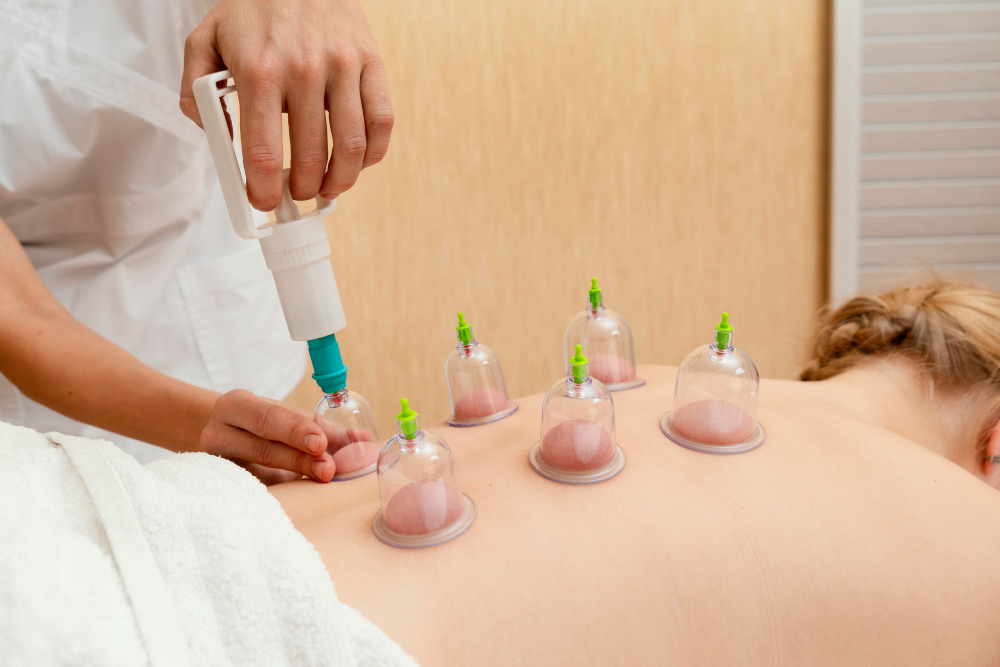
Cupping Therapy for Athletes: Enhancing Performance and Recovery
Athletes constantly push their bodies in their relentless pursuit of peak performance and quick healing in this competitive scenario. While traditional approaches like stretching, massage, and physical treatment help them relax and heal, there's a growing trend in the sports world that's catching the attention of both athletes and spectators alike – cupping therapy in London. It is an age-old practice traced from classic Chinese medicine and is gaining momentum as a method to improve athletic performance and accelerate recuperation. In this blog, we'll delve into what cupping therapy is, how it works, and the potential benefits it offers to athletes.
What Is Cupping Therapy?
Cupping therapy involves using specially designed glass, plastic, or silicone cups placed on the skin to create a vacuum or suction effect. The cups can be fixed or moved around the body in a specific manner. There are two primary forms of cupping therapy: dry cupping and wet cupping.
- Dry Cupping: In dry cupping, the cups are used to the skin and then heated, creating a vacuum. As the air inside the cup cools, it produces suction that raises the skin and superficial muscle layer. This procedure is primarily used for ease, pain relief, and increased blood circulation.
- Wet Cupping: Wet cupping therapy in Farringdon, also known as "hijama," involves a mixture of suction and controlled bleeding. After dry cupping, small incisions are made in the skin, and the cups are re-applied to draw out a small amount of blood. This method is believed to remove toxins from the body and promote healing.
How Does Cupping Therapy Work for Athletes?
For athletes, cupping therapy in London is mainly utilised in the dry cupping form. The process starts with a therapist or practitioner using the cups to exact body areas. The vacuum created by the results of the cups in localised decompression of the tissue, is thought to have several benefits:
- Improved Blood Circulation: The suction created by the cups stimulates blood flow to the targeted areas. This increased circulation can help deliver oxygen and nutrients to the muscles, promoting faster recovery.
- Muscle Relaxation: Cupping therapy in Farringdon can help loosen stretched, sore, and overworked muscles. Athletes often undergo muscle tightness due to stringent training schedules and contests, and cupping can relieve this discomfort.
- Pain Relief: The therapy has proven to provide pain relief for sportspersons, especially in cases of muscle irritation, injury, or regular pain conditions. It is believed to trigger the release of endorphins, the body's natural painkillers.
- Fascial Release: The treatment can also target the fascia, the tissue covering muscles and organs and connecting them. By releasing pressure in the fascia, athletes may encounter improved flexibility and movement.
- Detoxification: While not scientifically proven, some supporters of the therapy argue that it helps eradicate toxins from the body by drawing them to the skin's surface. This purported detoxification effect can be beneficial for athletes seeking to sustain maximum health.
Benefits of Cupping Therapy for Athletes
We’ve compiled the benefits of the therapy.
- Enhanced Recovery: One of the most important benefits of cupping therapy in Farringdon for athletes is its possibility to speed up post-exercise recovery. By promoting blood flow to sore and exhausted muscles, cupping therapy can help reduce muscle immobility and inflammation, facilitating athletes to get back to working out more quickly.
- Pain Management: Athletes continually deal with pain from injuries and grueling workouts. The therapy offers a non-invasive and drug-free strategy for handling pain. It can be used with other pain relief strategies, such as acupuncture or physical therapy.
- Improved Performance: While the proof is largely anecdotal, some athletes claim that cupping therapy has thoroughly affected their performance. By reducing muscle tension and improving range of motion, athletes may experience enhanced athletic abilities and decreased risk of injury.
- Non-Invasive Nature: Cupping therapy in London is non-invasive and has the tiniest side effects, making it a convenient option for athletes looking to add complementary treatments to their training regimen.
- Customisation: The session in the therapy can be bespoken to an athlete's precise needs. A trained therapist can modify the duration, power, and placement of cups to resolve particular concerns and objectives.
Conclusion
Cupping therapy is a centuries-old practice that has found its way into the modern athletic world, with athletes seeking potential benefits for their performance and recovery. While there is no shortage of anecdotal evidence supporting cupping therapy, its scientific backing is still evolving. Athletes interested in trying cupping therapy should consult with a trained and qualified practitioner. It's essential to approach this complementary treatment with realistic expectations and an understanding of its potential side effects. For some athletes, cupping therapy may provide the edge they need to perform at their best, but it should be considered alongside other established recovery and performance-enhancing strategies. As the world of sports continues to evolve, athletes are increasingly open to exploring various methods to gain a competitive advantage. Cupping therapy is one approach worth exploring for those seeking an additional tool to pursue peak performance and rapid recovery. Step into Lavender Health Service for the finest cupping therapy in London. Reap benefits from our customised sessions for faster recovery and superior performance.
